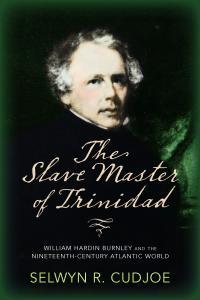An apology
By Dr Selwyn R. Cudjoe
January 21, 2023
Apart from the years that I have spent abroad, I have lived most of my life in Tacarigua, a village that is located about ten miles east of Port of Spain. In 1976 Lance Murray, an official of the Trinidad Sugar Estates (known then as the Orange Grove Estates), sent Fr David Benjamin, the pastor of the St Mary's Anglican Church, a letter offering the church an opportunity to purchase a plot of land adjacent to the church. Elated by the possibility of expansion, the members of vestry voted unanimously to accept the offer; they built a parish hall on the land.
Some members of that committee did not know or failed to remember that a Madrassi cemetery occupied that land. Worshippers of Kali (Mariamman, a Hindu goddess of rain), they were reputed to be fiercely independent and recalcitrant. I was around when the church decided to build the St Mary's Parish Hall, Tacarigua, on that ground. As a member of the parish I should have objected to the use of that land for any purpose, but I said nothing. That silence has always haunted me.
About two years ago, Michael Kangaloo, my classmate from St Mary's Anglican School, raised the issue. His parents were Hindu but he attended the Anglican school. He left Trinidad in the 1970s, studied in England, but eventually ended up in Canada where he did extremely well. He was always a studious person.
In his letter Michael asked if I remembered the Madrassi cemetery of which I speak. He informed me that his grandparents were among the last people buried in that cemetery. He gave me their names. His mother had given him the information. I told him that I remembered the Indian cemetery and the use for which the land had been converted. Once more I regretted not having raised any objection to the construction of the church building on that old cemetery grounds.
A few weeks ago while I was at the T&T Archives doing research on my forthcoming book, I discovered the following item tucked away in The Mirror newspaper. It read in part: "(Charles) Kingsley quotes from the (EL Joseph) History of Trinidad the story of a mutiny among the African troops at St Joseph and the execution of three men, Donald Stewart (or Daaga), Maurice Ogston, and Edward Coffin, after their military court martial on the 16th of August 1837.
"These men were taken in the African slave trade."
Kingsley writes sympathetically against the mistaken policy of converting heathen savages into British soldiers, and concludes by exclaiming "Ah stupid savages. Yes, but also—Ah stupid civilised people." Three skeletons supposed to be the remains of the three executed mutineers aforesaid, have lately been unearthed at St Joseph and the skull of one of them, pierced by a bullet, has been brought to town for presentation to the Victoria Institute.
"Why the remains of these men have been disturbed and not re-interred no one can explain. The law of the Colony forbids the digging up of dead bodies and disturbing the old graves. It cannot be imagined by what process any one in St Joseph or elsewhere could have claimed possessory title to their bones."
The quote continues: "These men though sinning were far more grievously sinned against. In their savage brutal ignorance they only fought for the freedom we all love so well. Their execution is a blot on English history in this island. It would seem the persecution which followed them through life will not let their bones rest in peace and some discoverer, with a belief in the resurrection of the dead, has without any authority proposed to send the skulls for sensational purposes to the Victoria Institute, an institution, by the way, intended only for the collection of objects of natural history and the products of the island. Even if a local Chamber of Horrors had been established here, these remains should have no place in it" ("The St Joseph tragedy", The Mirror, March 19, 1898).
These words reminded me of my transgression in not objecting to the building of a church hall on those sacred grounds. Some of the members of my church knew that the site on which they built the church hall had been used as an Indian cemetery, but may not have been aware of the sacrilegious nature of this act. It may have been foolhardy to speak out and I, too, was coward not to voice my disagreement.
On Tuesday evening I had dinner with my schoolmate, Phulandaye Bedase, nee Ramdhanie. She informed me that Home Construction Ltd also built a housing complex, Paradise East, on a former cemetery at the head of St Michael Road, Tacarigua. Her maternal grandmother was buried in that cemetery.
There are some things in life that we do, or fail to do, for which we feel eternally sorrowful and for which we need to apologise. In my case, I violated my commitment to speak the truth when my church leaders decided to build a church hall on the former Madrassi cemetery. The article, "The St Joseph tragedy", gave me the courage to confront my shortcomings.
I have always known that it is illegal to disturb a grave other than for an officially sanctioned exhumation. By not expressing my objection to the construction of this church building I compromised my obligation to speak out where human decency is violated and for that I apologise.
The St Mary's church leaders can also do their part to right this wrong. They should place a small plaque on that property to remind worshippers that a Madrassi cemetery stood on this place where they now stand. We are sorry for violating their sacred space.
—Prof Cudjoe's e-mail address is scudjoe@wellesley.edu. He can be reached @ProfessorCudjoe.
Share your views here...

The Slave Master of Trinidad by Dr. Selwyn R. Cudjoe
|

